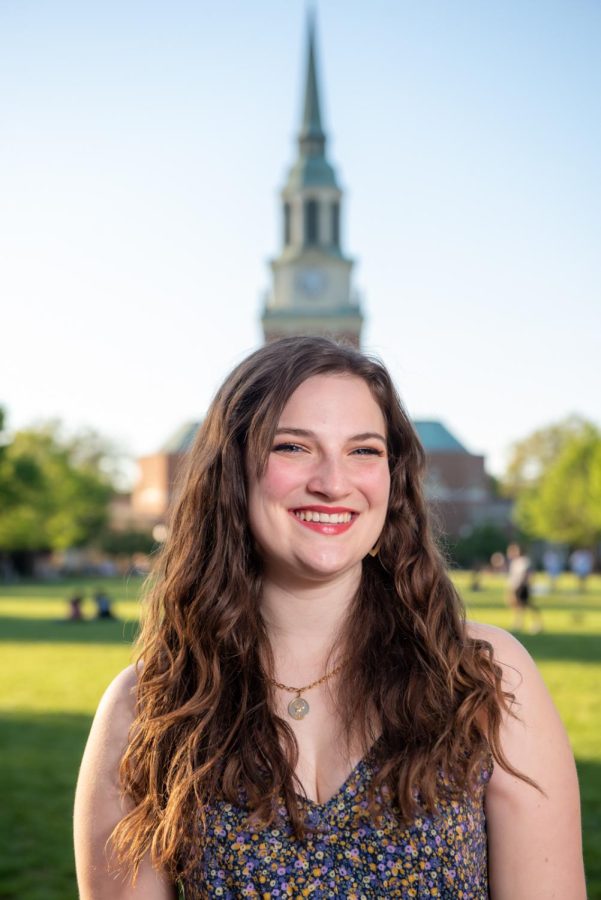Classical Studies: Maddie Koontz
Since she was a little girl, Maddie Koontz was a classics major in the making. The lore of Greek mythology fascinated her. It all started when she read the “Percy Jackson and the Olympians” series in third grade — and then Homer’s “Odyssey.” She even tried to learn ancient Greek for a short stint in elementary school. She was an ambitious kid.
Koontz’s family told her that she taught herself how to read before most other kids, so it was always a challenge to find books that were on her reading level but also age appropriate. One of her earliest reading memories is the “Harry Potter” series before turning to “Percy Jackson.”
She was instantly hooked. She would make her mom take her to Costco to pick up the new books as soon as they came out. Two days of non-stop reading were followed by a year of waiting for the sequel to come out.
Annabeth Chase in the “Percy Jackson” series was an inspiration for her because, like Chase, Koontz has ADHD. She was diagnosed in third grade, when she was beginning to read the series. Chase, a demigod daughter of the goddess Athena, is known for her intelligence.
“Seeing the portrayal of a girl who’s really smart but still struggles with focusing and all of that stuff but was still intelligent and known for that was a huge deal for me,” Koontz said.
For practicality and her parents’ sake, Koontz also majors in business. As she was choosing a major, she reflected on her upbringing and education and realized that Greek myth had been a connecting theme.
“The moment when I realized I could study it was the turning around and looking back and just realizing how it had been a constant connection throughout my entire life,” Koontz said.
She loves classics because, at its core, it is the study of ancient people and culture, so we can understand our contemporary time.
“I really love learning about humanity — at a very basic level — and the different things that make us similar and different,” Koontz said.
When I asked Koontz what the most significant thing she had learned as a classics major thus far was, she didn’t recall a book or a lecture or a story. She immediately thought of a place.
During her semester abroad in Rome, Koontz was walking around one day after class, and she stumbled upon the Ara Pacis, or the altar of peace. It was built to celebrate the return of the emperor Augustus to Rome after a three-year campaign in Spain and Gaul (modern-day France and Germany). Dedicated to the Pax Romana, it is one of the most significant monuments in all of ancient Rome. Koontz didn’t know that yet, though. To her, it was her own special place, one she discovered herself. She would sneak away to her newfound spot at least once a week. Then, she began learning about it in her classes and realized that her hidden gem wasn’t so hidden anymore.
“I was just amazed by it,” Kootz said. “And then to slowly discover that not only did this become important to me first, but then to discover what a point of importance that it was for the Roman Empire, which ultimately becomes a lot of the basis of civilization itself, was just so cool.”
Next up for Koontz is the Wake Forest Fellows Program, which offers year-long fellowships to graduating students in a variety of departments. Koontz will be working with Z. Smith Reynolds Library.
